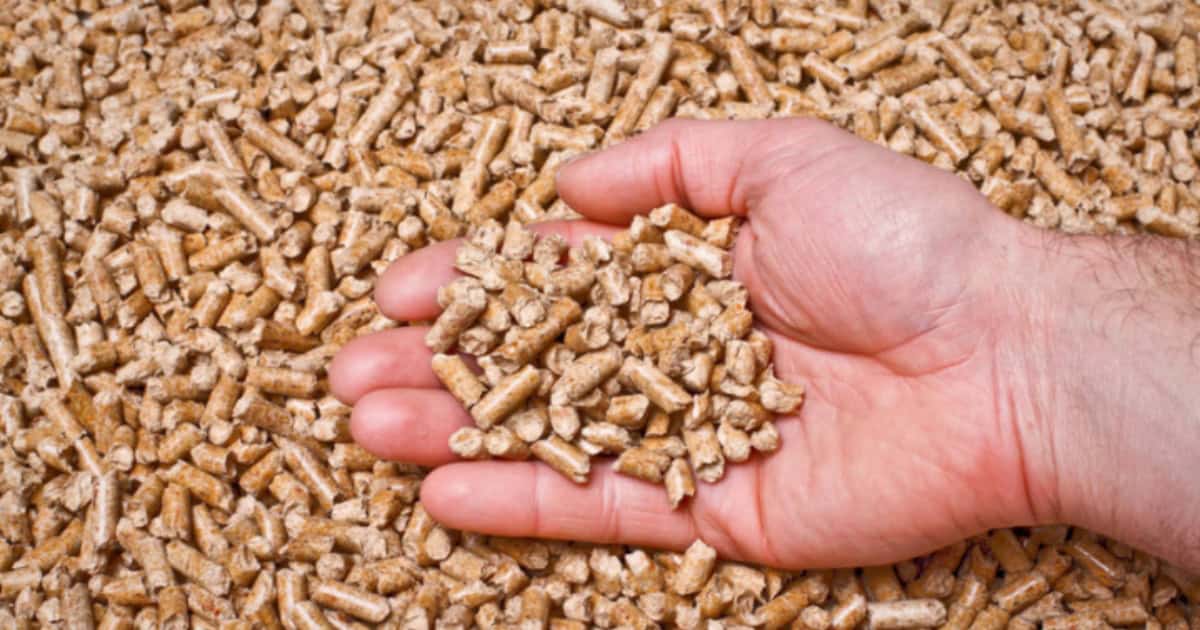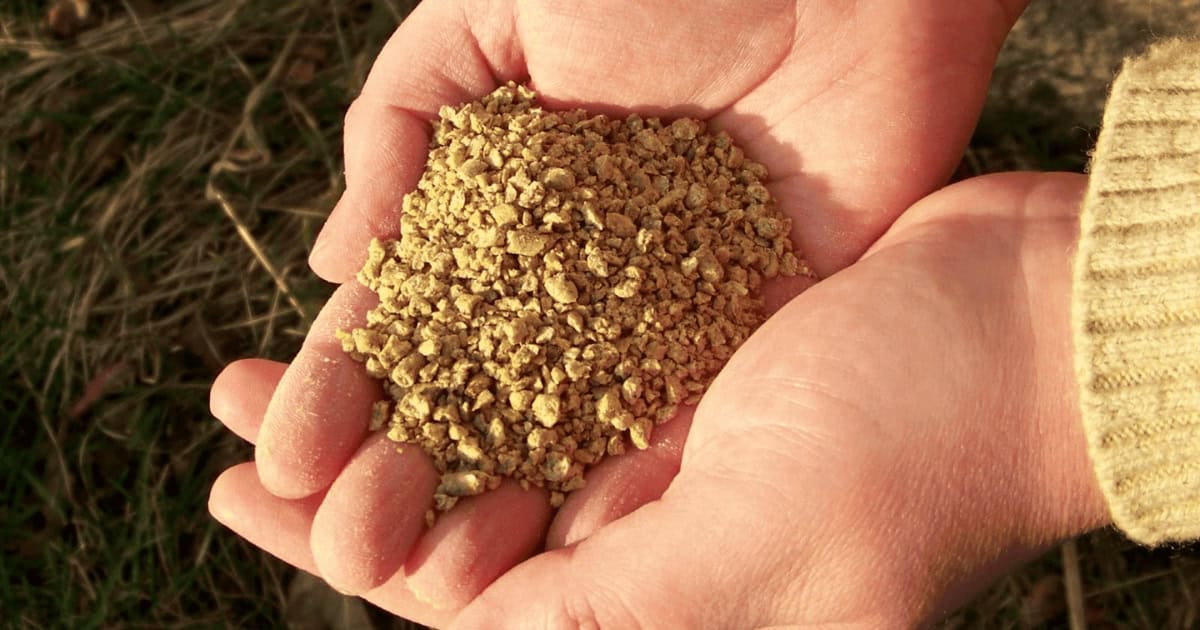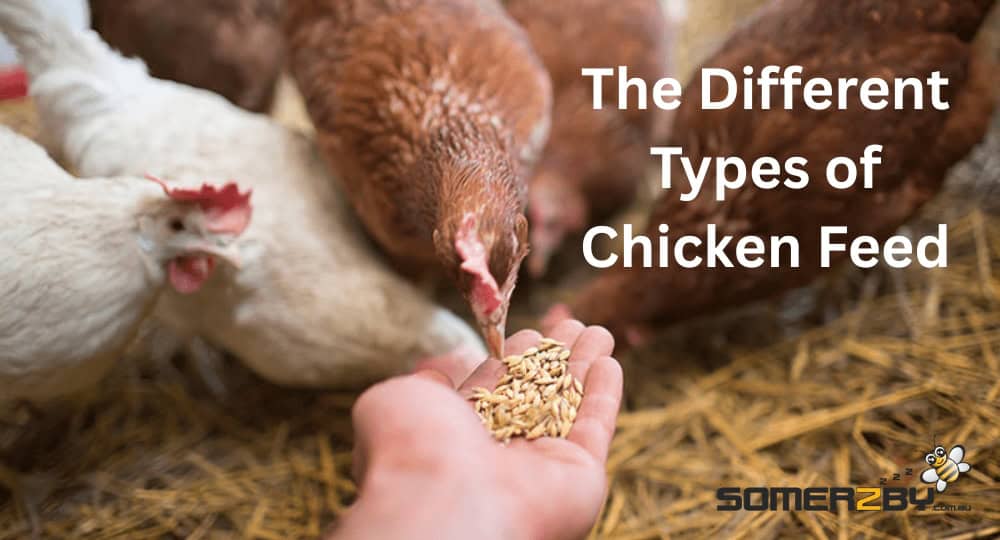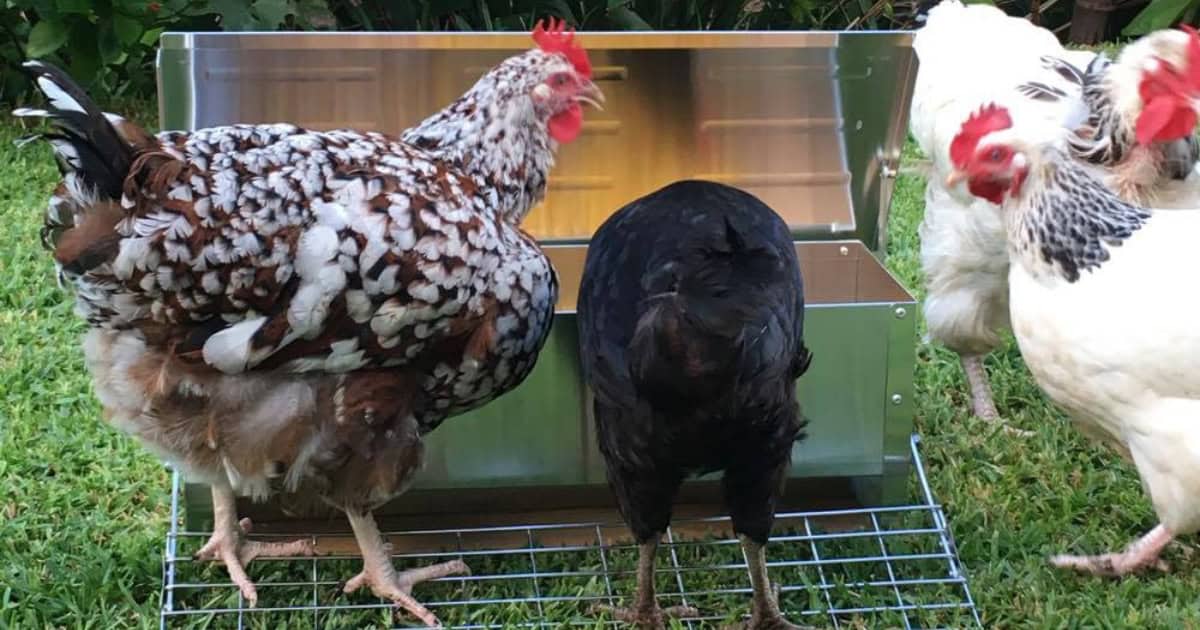Chickens, Info Guides
What Are The Different Types of Chicken Feed?
When you first decide to raise chickens, one of the first questions you will ask will be – what do chickens eat? It can be a little overwhelming. There are so many different types of chicken feed! Let us help…
What is Typical Chicken Feed?
Most backyard chicken keepers will give their flock commercial feed. This can be purchased from farm supply stores. These commercial feeds are formulated to meet the daily nutritional needs of your chickens at certain ages.
Common chicken feed ingredients include cereal grains, wheat, barley, corn, soybeans and nutritional additives including essential vitamins and minerals.

What is Typical Chicken Feed?
In addition to their daily chicken feed, you can give your chickens treats such as kitchen scraps or tinned corn
Help your chickens stay healthy by limiting how often you feed them treats. It is extremely important your chooks have a regular supply of fresh water and a safe, clean chicken coop or enclosure.
Healthy chickens typically drink three times as much water as they eat food. They may require extra drinking water during their egg producing years and also during hot weather in summer.
What are the Different Types of Chicken Feed?
If you are raising chickens, you need to be aware that there are different kinds of commercial chicken feed. Which type of food you choose will depend on the age of your hens and if they are producing eggs.
Starter Feed
Starter chicken feed is given to baby chicks until they are around 6 weeks old. They have a very high protein content at around 18-20%. This is designed to help promote healthy growth in young chicks.
Grower Feed
Once your baby chicks reach 6 weeks old, their starter feed is replaced with grower feed. This contains 15-16% protein and less calcium than layer chicken feed.
Layer Feed
When your hens begin laying eggs, you should start feeding them layer feed. If your hens eat layer chicken feed it will help them produce better quality eggs that are high in nutrients with strong shells. They can continue eating layer feed throughout the rest of their lives.

Benefits of Layer Feed
Layer chicken feed will help chickens produce better quality eggs that are high in nutrients with strong shells
Medicated Feed
Medicated feeds contain hormones that prevent poultry diseases, such as coccidiosis (an avian intestinal disease caused by parasites).
This is typically given when they are baby chicks and have not started egg production yet. Seek advice from your poultry specialist vet when introducing medicated feed to your chooks.
What are the Different Forms of Chicken Feed?
The above mentioned types of chicken feed can all come in 3 different forms or shapes. There is no wrong choice, it depends what your chooks (and you) prefer.
Pellets
Pellets are set into small, hard, cylinder-shaped biscuits. Pellets are easy to store and less messy than other feed forms. This leads to less wastage and will save money in the long run. If you have ever seen rabbit food, you will be familiar with what pellets look like.
Crumbles
Crumbles are pellets that are not fully formed. The smaller portions mean it is easier to eat and therefore usually the preference for picky chickens. However, it can be a little messy.

Chicken Crumble Feed
Chicken crumble feed is easier to eat for chickens
Mash
Mash food is loose chicken feed that isnot baked into any shape. It is very easy to consume so ideal for smaller birds. Mash is quite messy and therefore more easily wasted. This means it can cost more money in the long term.
What is the Healthiest Feed for Chickens?
There is no ‘best feed’ as health requirements will vary between chickens. Choose a high quality commercial feed that is suitable for the age and egg production of your hens.
Most backyard chicken keepers will provide their flock with constant access to food in a their run area. Use an automatic treadle chicken feeder to prevent mice and rats getting into the poultry food at night time.
Chickens will stop eating when they are full. This is beneficial because it stops them becoming overweight.
However, it makes it important you limit feeding them treats. If your poultry fill up on treats and scraps first, they won’t have room to eat their nutritional feed and therefore will become unhealthy.
Automatic Chicken Feeder
Use an automatic treadle chicken feeder to prevent mice and rats getting into the poultry food at night time.
What Can You Feed Backyard Chickens in Australia?
In addition to a high quality commercial food, you can feed your chickens a variety of fruits and vegetables as treats. These can help to supplement their diet.
Giving your poultry fruit and vegetable scraps or leftovers if a great way to avoid food wastage. Australian backyard chickens enjoy leafy greens, beets, carrot, broccoli, pumpkin, cucumber, corn, banana, strawberries and apples (with the seeds removed).
You can also give your flock grass clippings, as long as the grass hasn’t been sprayed with chemicals.
This can supplement their diet and keeps them entertained. Note that foraging alone is not enough to feed your chickens in Australia.
You will still need to provide them with chicken feed daily. To keep healthy chickens, avoid feeding them uncooked beans, uncooked rice, raw potato, avocado, onion, garlic or citrus fruits. You should never feed your chickens mouldy food.
What is the Best Poultry Feed for Laying Hens?
A healthy hen that is fed the right vitamins and minerals will lay more eggs. It is therefore important to give your girls high quality chicken feed in a nice clean chicken feeder.
Check the ingredients in your hens’ daily chicken feed. It may be a good idea to contact your local feed store for recommendations and advice.
Your hens will need the right amount of protein in their diet. Too little or too much protein can result in reduced egg production – it is all about finding a healthy balance. Most hens will require 16% protein in their diet, which is approximately 20g per day.
In addition to protein content in their daily chicken feed, you can give your laying hens protein rich treats. These include dried meal worms, pumpkin seeds, chia seeds or hemp seeds.
A laying hen will also need to consume higher levels of calcium. This will help create strong egg shells. You can add extra calcium into your chickens’ diet by feeding them crushed oyster shell grit. Shell grit is available from most farm supply stores.
Broilers are chickens being raised for their meat. They require a high protein and high fat diet to help them grow as big as possible.
Broiler are often physically larger and therefore will eat more chicken feed each day than your average laying hens.





